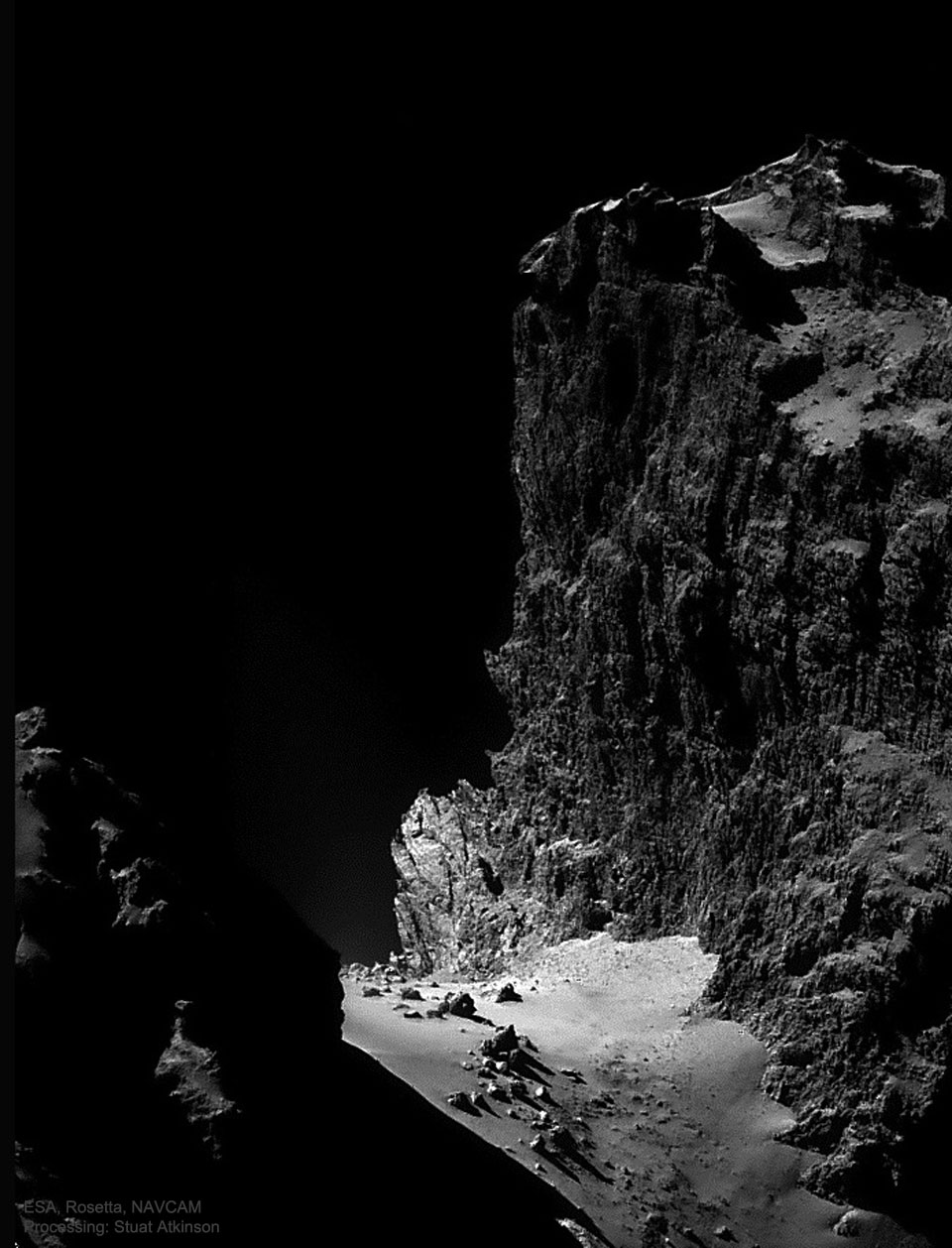丘留莫夫-格拉西缅科彗星上的悬崖
(原标题: A High Cliff on Comet Churyumov-Gerasimenko)
2021-11-28
浏览次数: 145
这个高悬崖不是在行星上,也不是在月球上,而是在彗星上。它是由罗塞塔发现的楚留莫夫-格拉西门科彗星(CG)的黑暗核心的一部分,罗塞塔是欧洲航天局发射的一艘机器人航天器,于2014年与这颗绕太阳运行的彗星会合。图中所示的崎岖悬崖是罗塞塔在2014年拍摄的。虽然彗星CG高约一公里,但它的表面重力很低,很可能使它成为一个容易攀登的地方,甚至从悬崖上跳下去也能存活下来。在悬崖脚下是相对平坦的地形,点缀着20米宽的巨石。来自罗塞塔的数据表明,彗星CG上的冰的氘含量明显不同,因此可能与地球海洋中的水有不同的来源。2016年,罗塞塔号以受控撞击彗星CG结束了它的任务。彗星CG刚刚完成了另一次近距离接近地球的任务,通过小型望远镜仍然可以看到。
查看原文解释
This high cliff occurs not on a planet, not on a moon, but on a comet. It was discovered to be part of the dark nucleus of Comet Churyumov-Gerasimenko (CG) by Rosetta, a robotic spacecraft launched by ESA that rendezvoused with the Sun-orbiting comet in 2014. The ragged cliff, as featured here, was imaged by Rosetta in 2014. Although towering about one kilometer high, the low surface gravity of Comet CG would likely make it an accessible climb -- and even a jump from the cliff survivable. At the foot of the cliff is relatively smooth terrain dotted with boulders as large as 20 meters across. Data from Rosetta indicates that the ice in Comet CG has a significantly different deuterium fraction -- and hence likely a different origin -- than the water in Earth's oceans. Rosetta ended its mission with a controlled impact onto Comet CG in 2016. Comet CG has just completed another close approach to Earth and remains visible through a small telescope.
